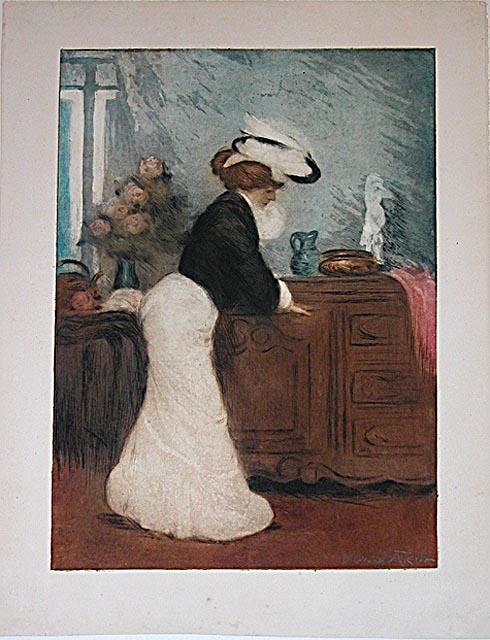Manuel Robbe
View All WorkSince the publication of Rediscovered Printmaker of the 19th Century in 1978, much has been written about this celebrated artist of the Belle Epoque. Indeed, as once suggested, Manuel Robbe is no longer a “forgotten printmaker of the 19th century.” Instead, Robbe’s work typifies both the elegance and the style of the era, as well as the dynamics of color printmaking at that time.
Having studied at both the Académie Julian and the École des Beaux-Arts in Paris, Manuel Robbe discovered color etching through Eugène Delâtre. Encouraged by his friend Jacques Villon, and supported by his publisher Edmond Sagot, Robbe became an accomplished engraver specializing in the sugar-lift aquatint process, and subsequently became one of the leaders of the color etching movement. Although his first color works were printed by Delâtre, he soon became an excellent technician himself and printed his own work using aquatint on a zinc plate printed “a la poupée.” Between 1898 and 1914, Robbe produced a large number of editions of usually 25-65 using a painterly style of rich, velvety blacks against creamy whites, pale silvery grays, misty pinks, or more unusual colors such as browns, ochres, or bronze-greens.
Robbe's favorite themes included the bourgeois modern women of the Belle Epoque performing their daily toilette or engaging in the social activities of the day – shopping, playing with children in the park, or attending a gallery exhibition.

